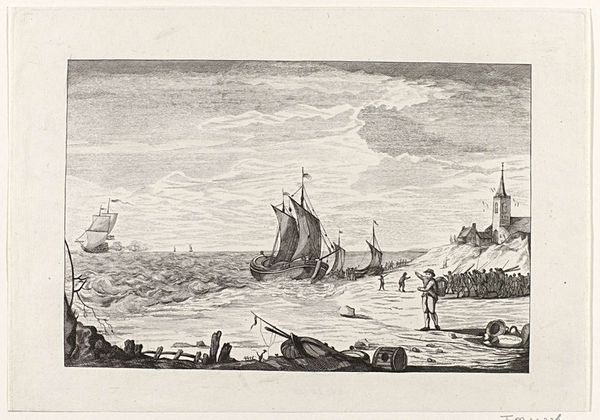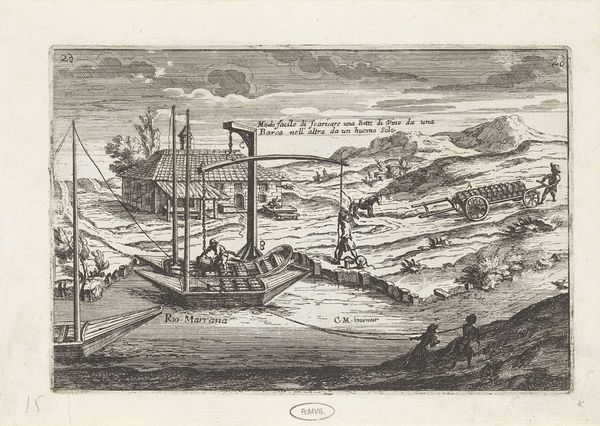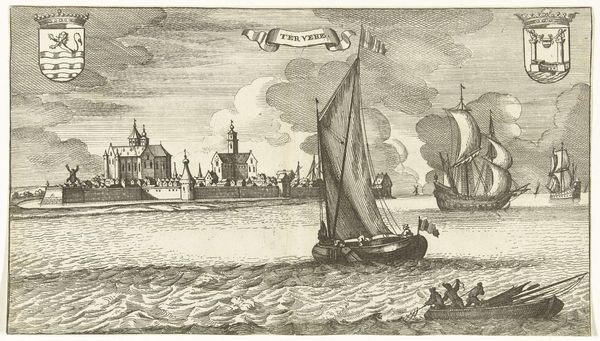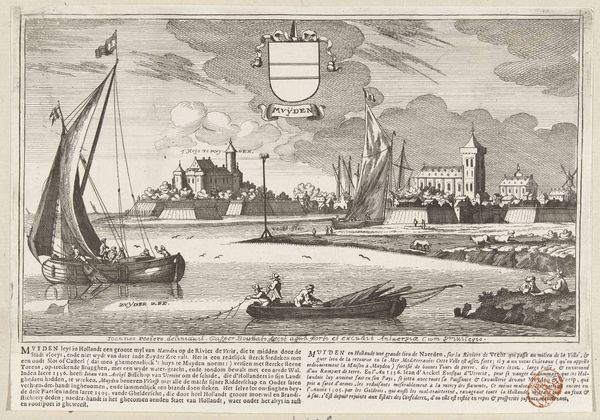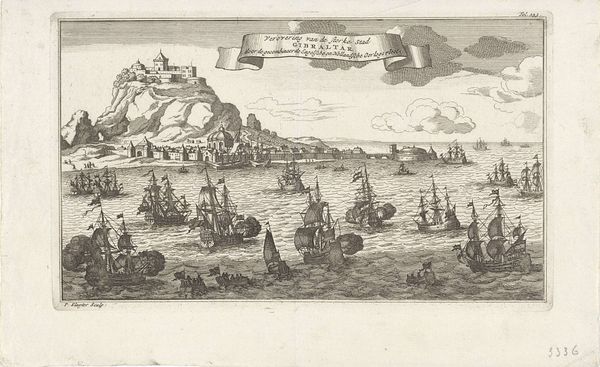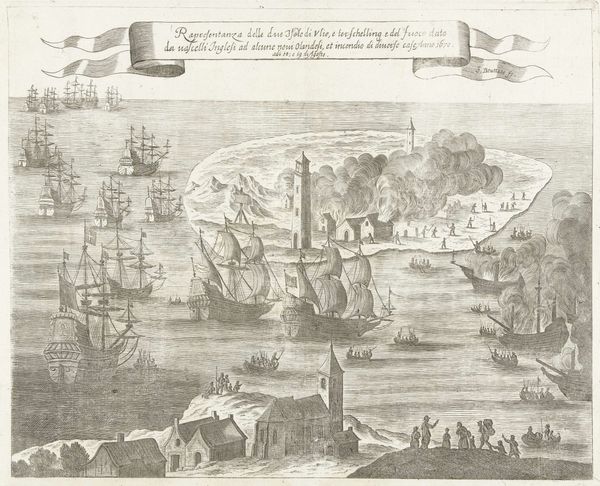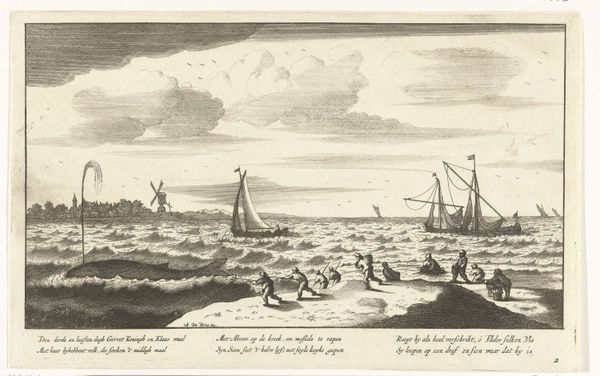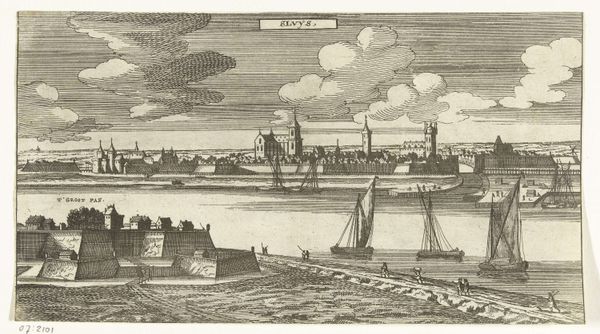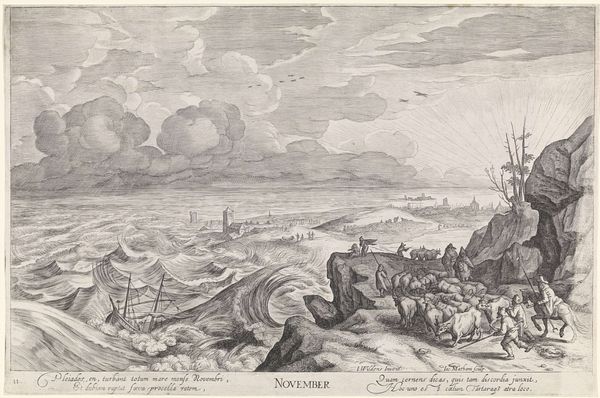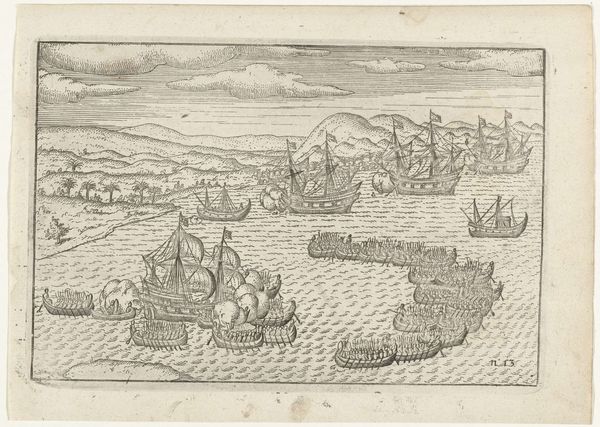
Ophouden van de keizerlijke brik op de Schelde bij Fort Lillo, 1784 1784
0:00
0:00
Dimensions: height 213 mm, width 325 mm
Copyright: Rijks Museum: Open Domain
Editor: This print, "Ophouden van de keizerlijke brik op de Schelde bij Fort Lillo, 1784" by an anonymous artist, depicts a scene on the Schelde river. The fine lines of the engraving give it a delicate feel, almost like a meticulously crafted map. The scale seems unusual. What political forces were in play? Curator: It’s crucial to consider this image within the context of the Dutch Republic and its relationship with the Holy Roman Empire at that time. Fort Lillo was strategically significant. This print visualizes power dynamics along the Scheldt river. What's your understanding of who commissioned these images? Editor: Maybe it was a way to commemorate or perhaps even shape public opinion on this specific incident involving the imperial brig? It almost feels propagandistic in nature. Curator: Precisely! Prints like these often served as visual arguments, aimed at constructing narratives and influencing political sentiment. It showcases how art contributes to constructing national identity and justifying political actions. Editor: So, understanding the original intent and audience of the print drastically alters how we view the artwork itself? Curator: Absolutely. Understanding the social and political landscape helps reveal how imagery plays an active role. Museums exhibiting work like this have a responsibility to bring such elements into the viewer's consideration. What lasting impressions do you gather? Editor: Seeing it now, it's not just a landscape or a depiction of a ship; it’s a statement, a snapshot of power plays in 18th-century Europe. I'll definitely look at historical prints differently now. Curator: Indeed. The layering of context onto observation significantly enhances our ability to interpret a piece, acknowledging art’s intrinsic connection to power, purpose and socio-political climate.
Comments
No comments
Be the first to comment and join the conversation on the ultimate creative platform.
